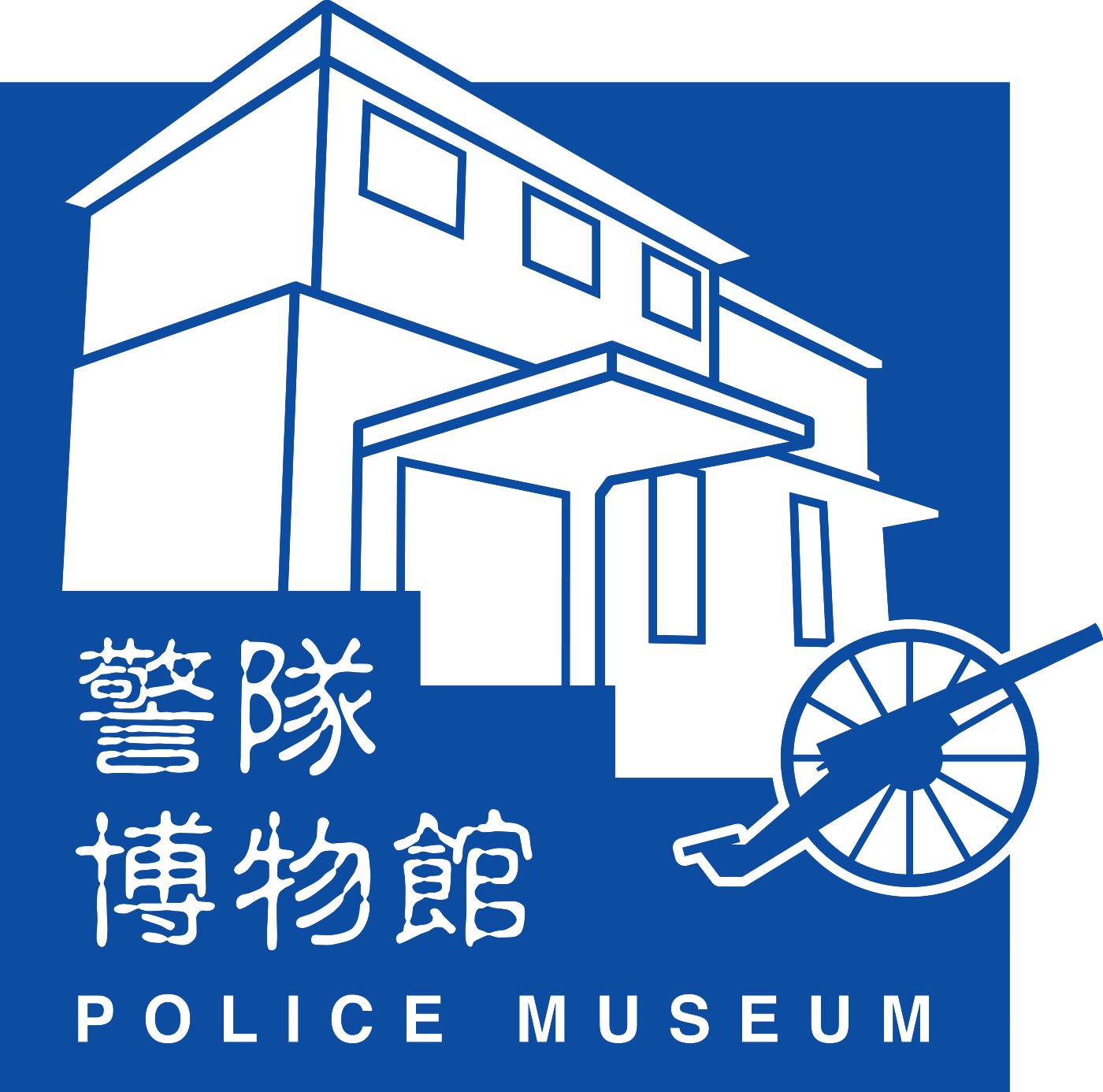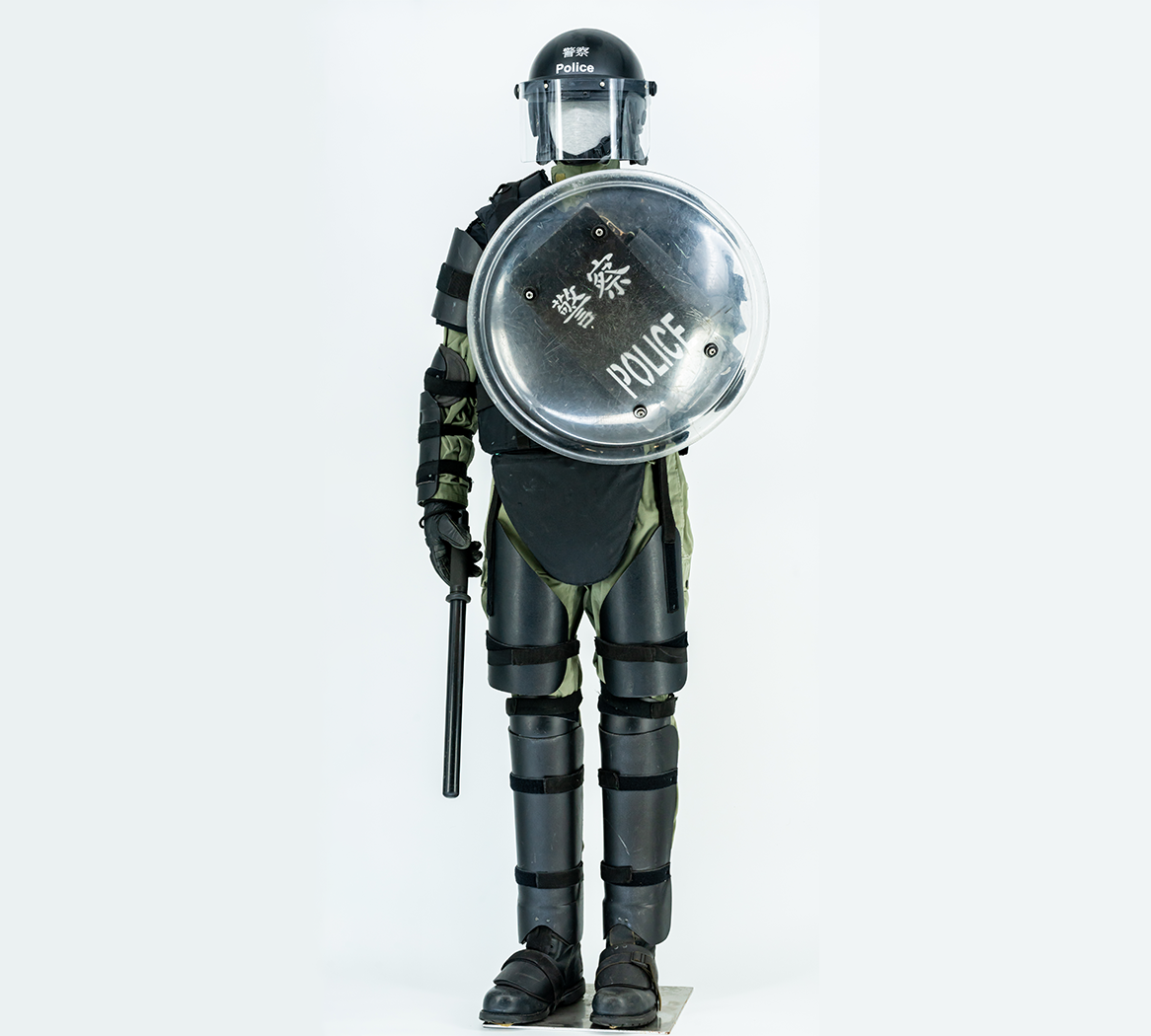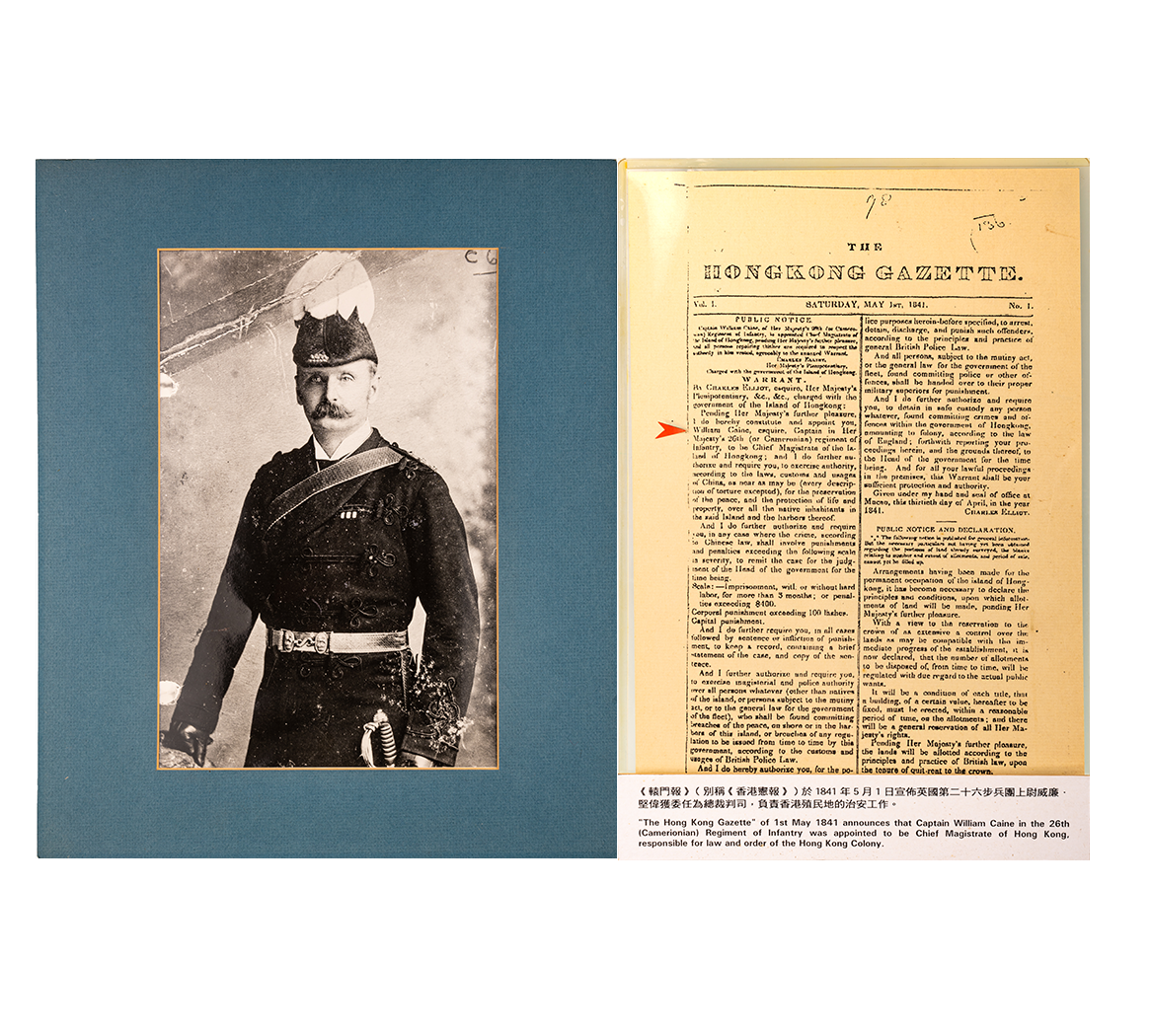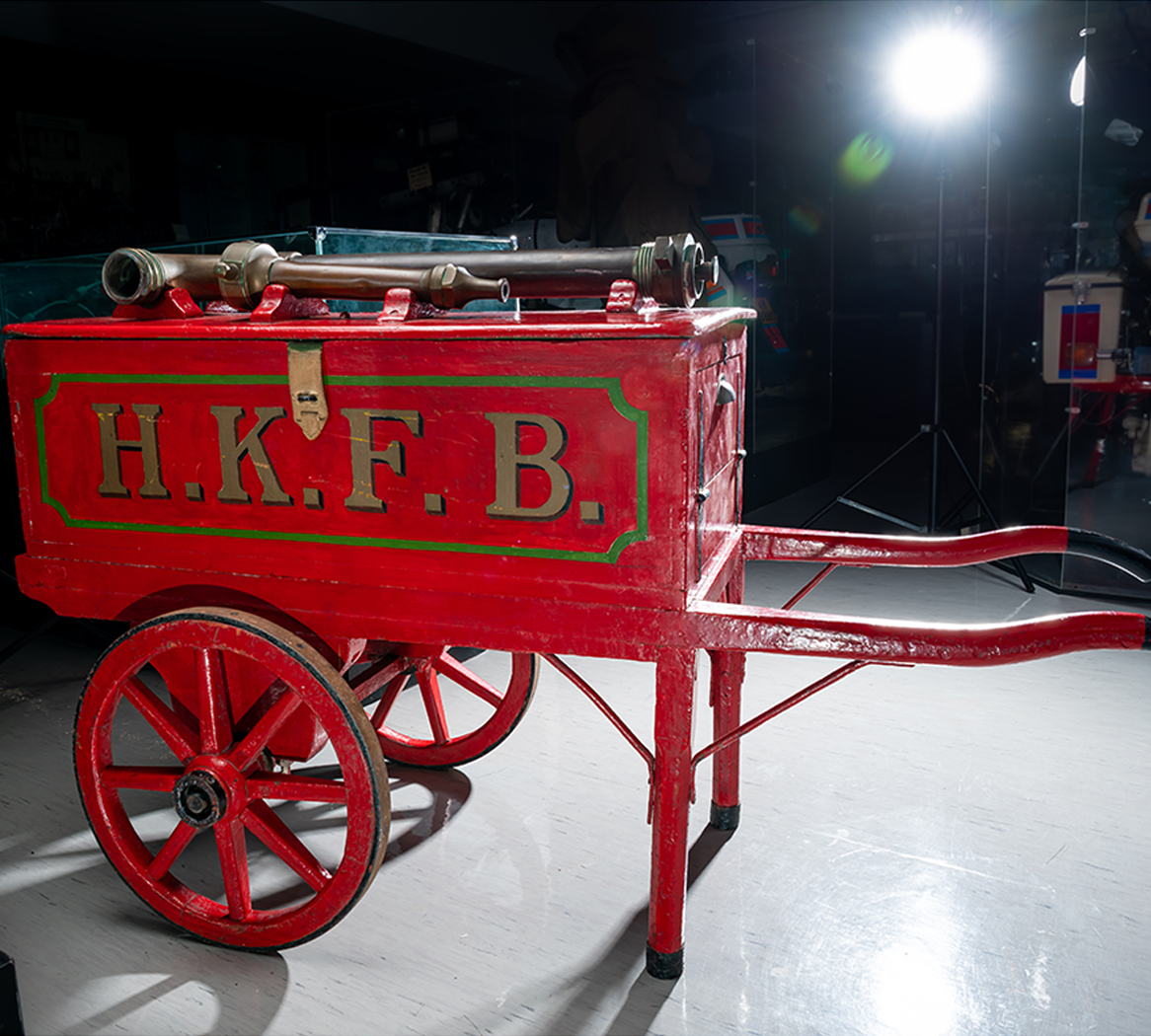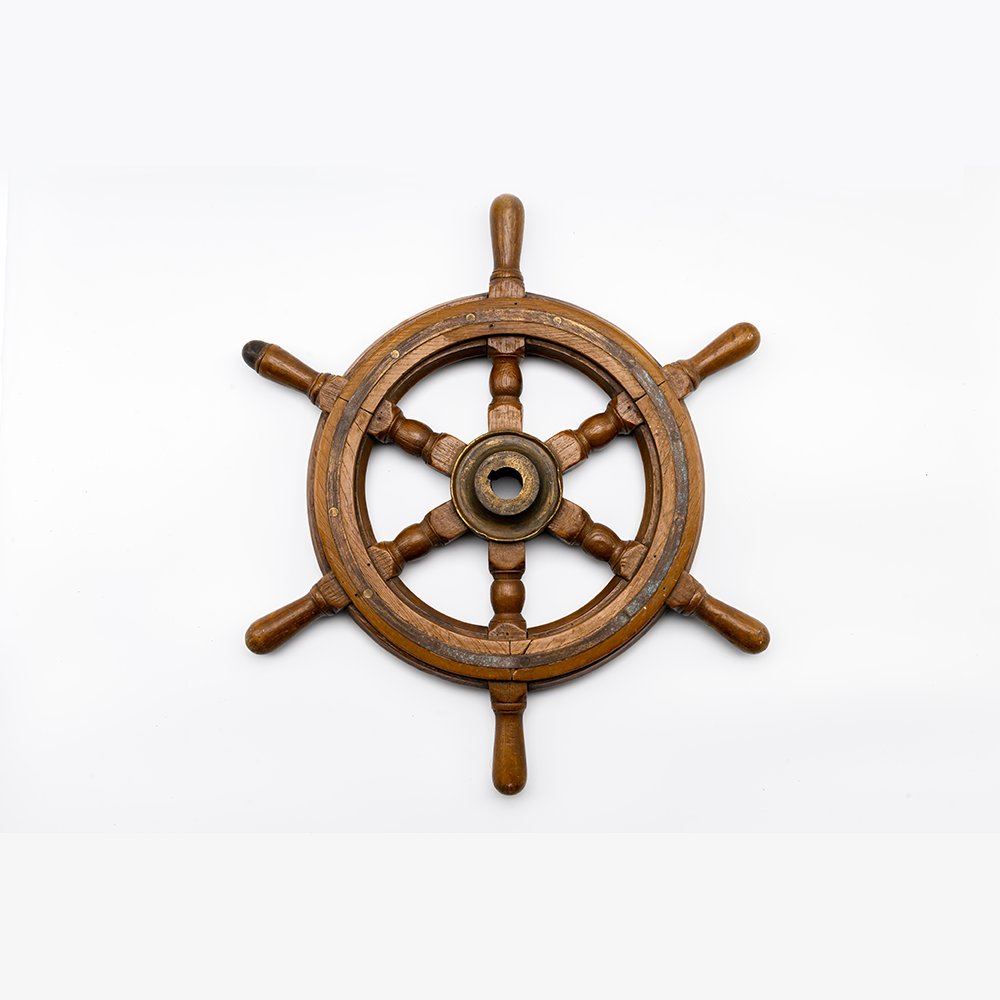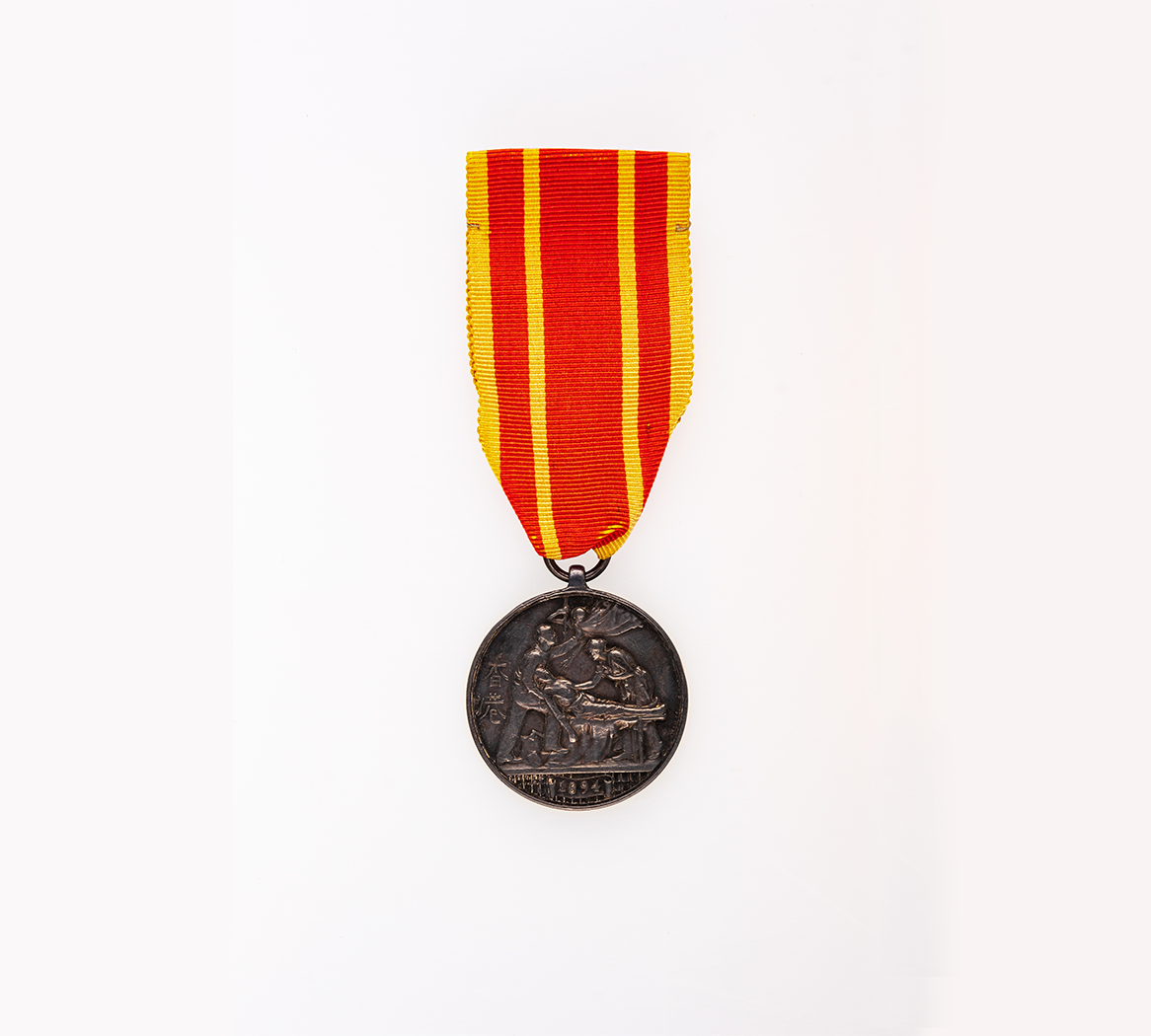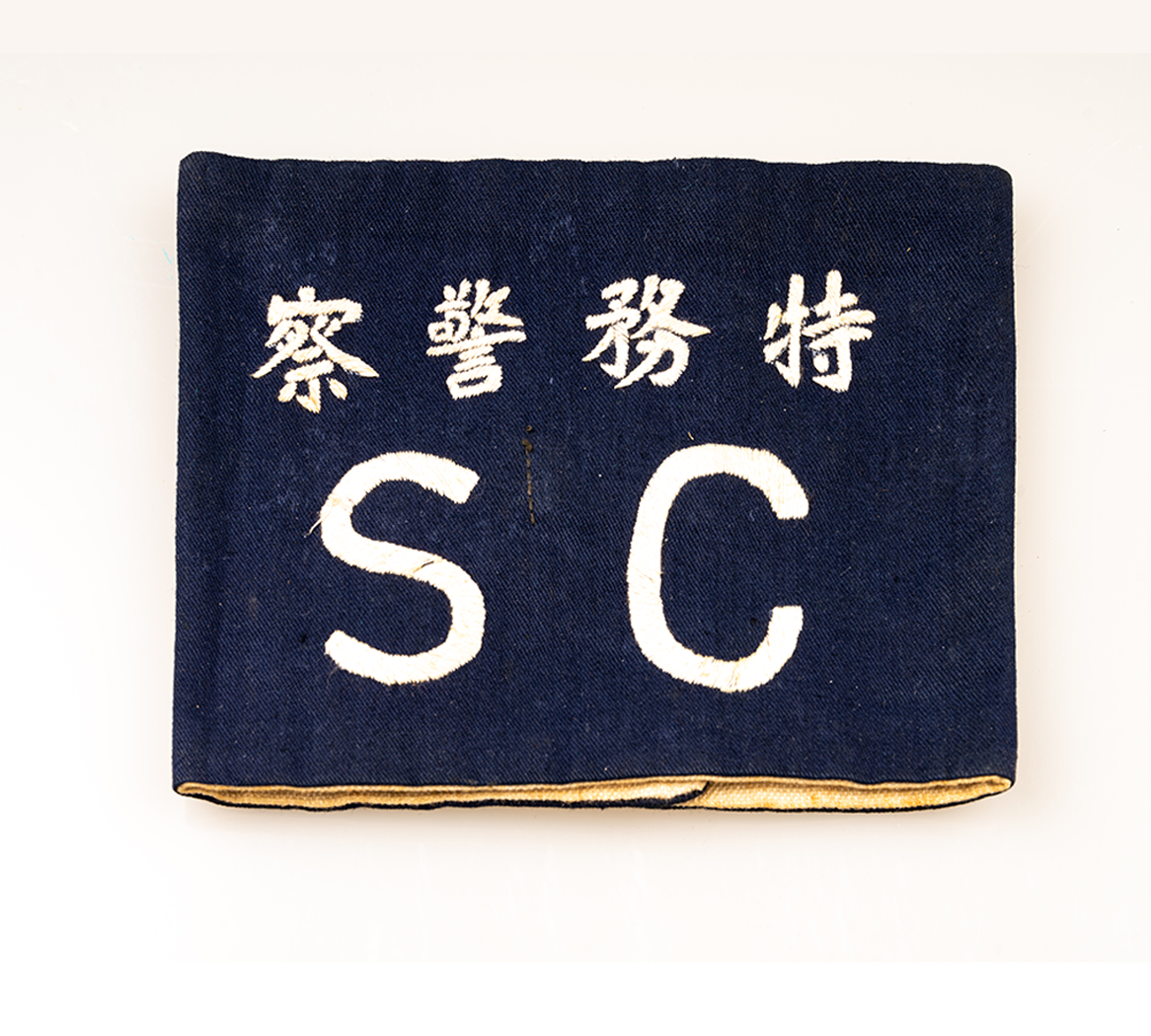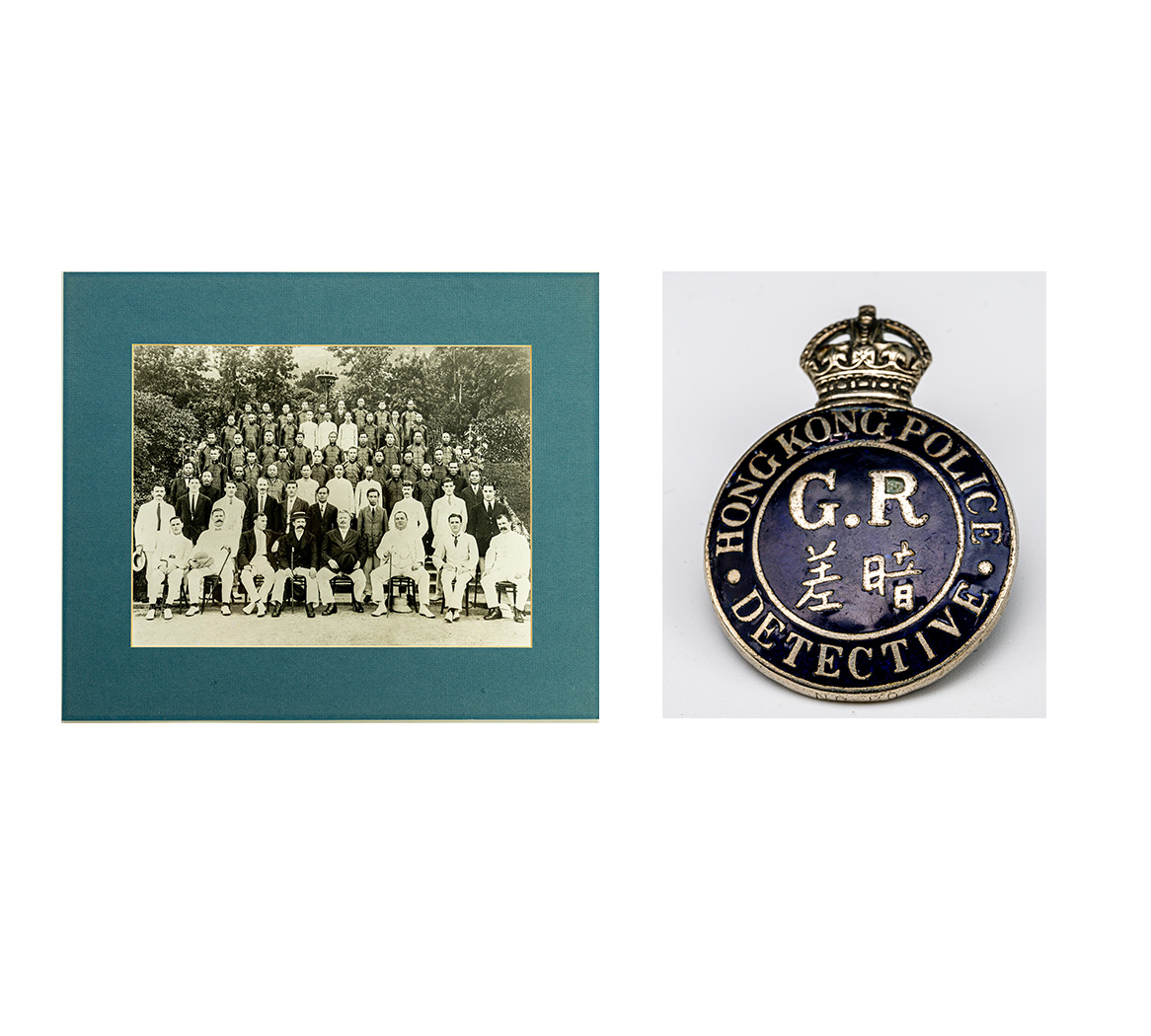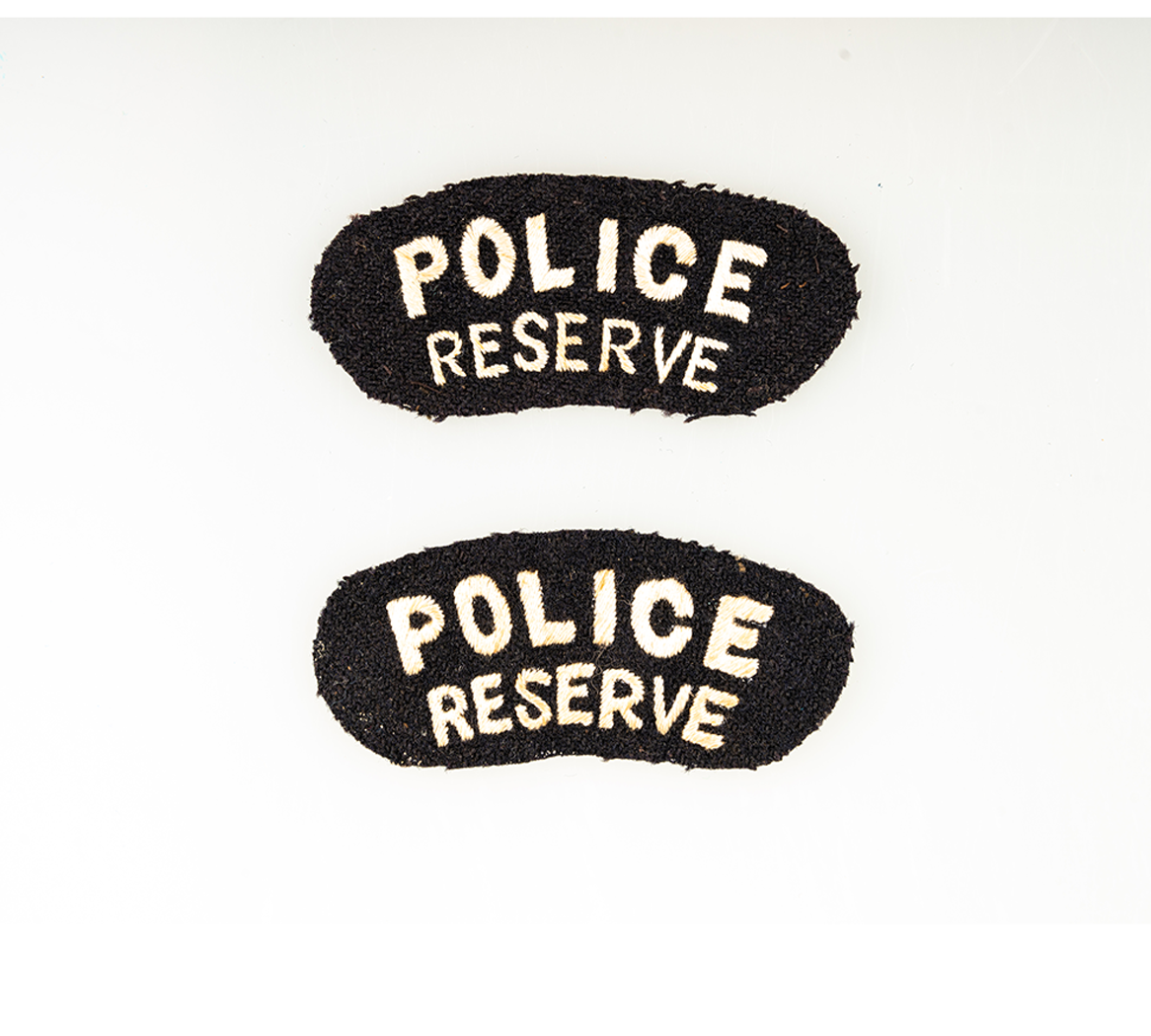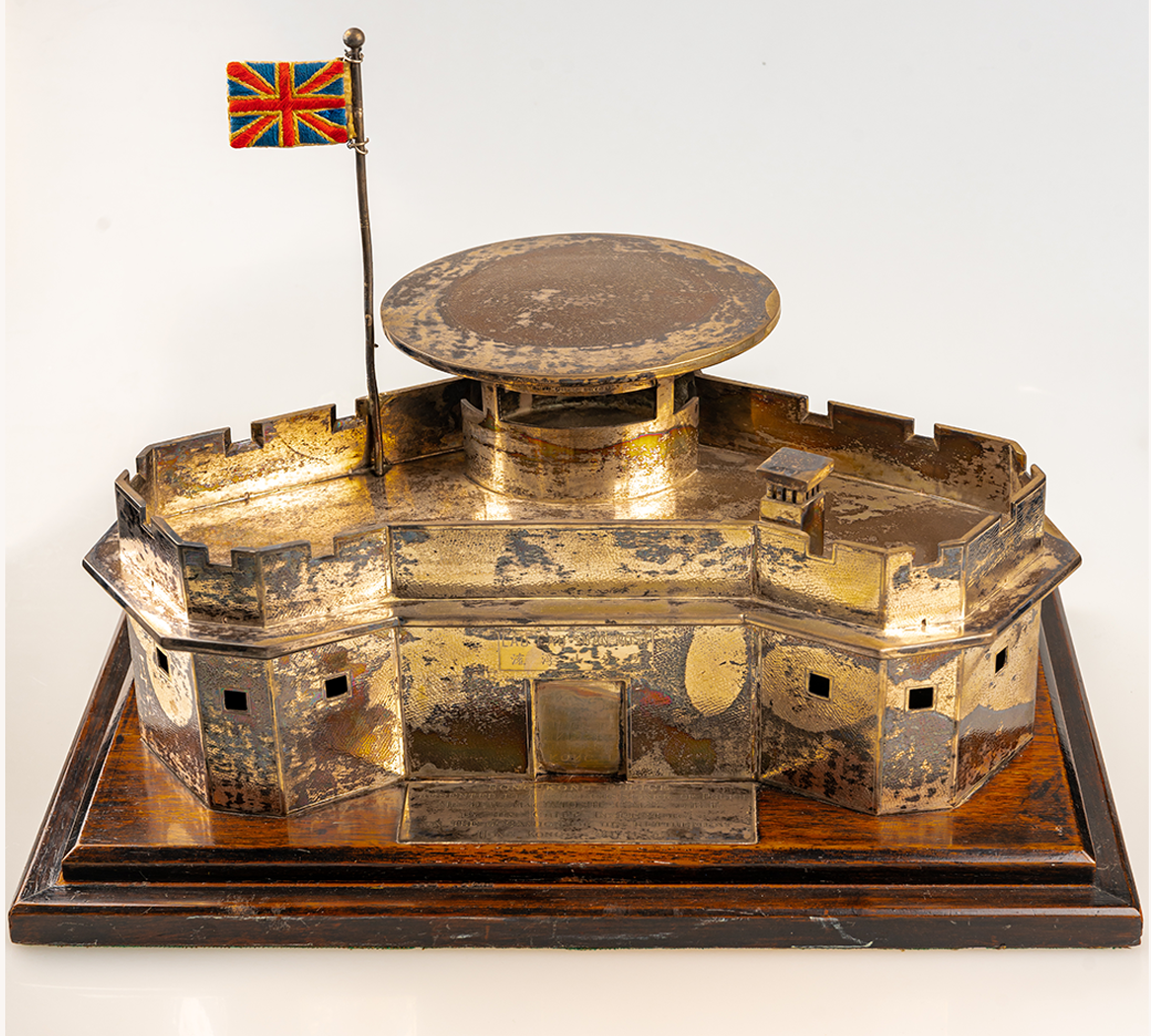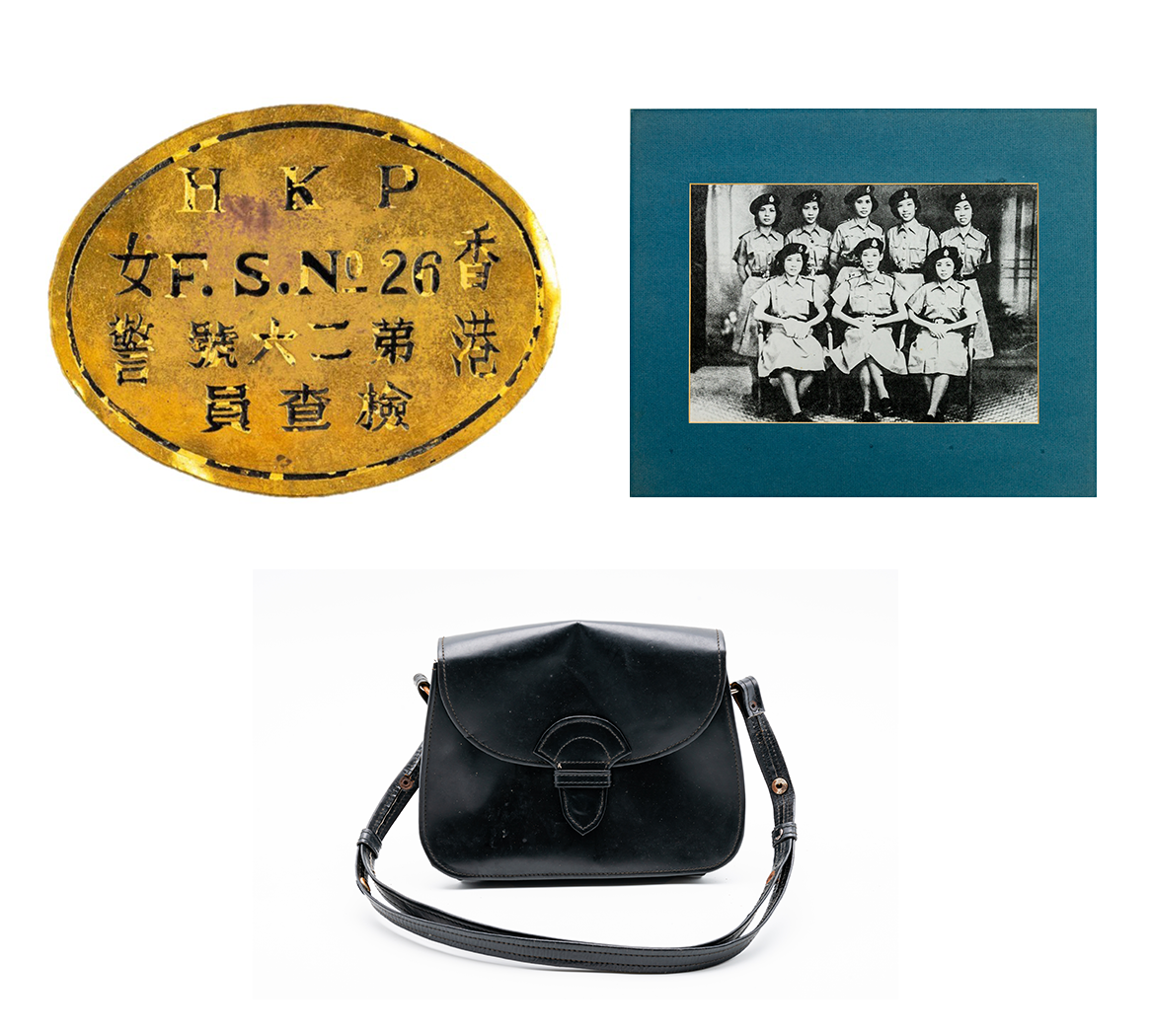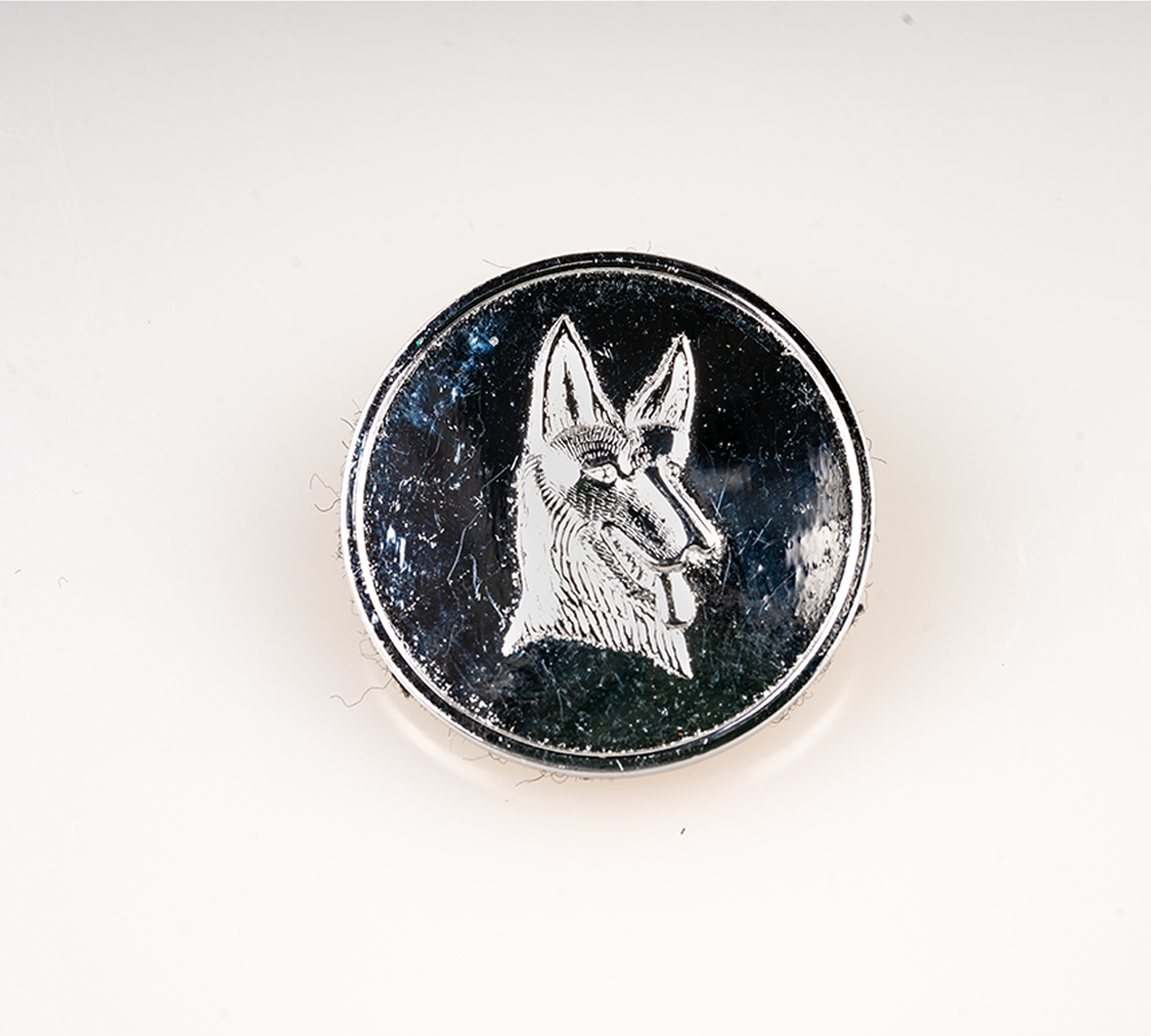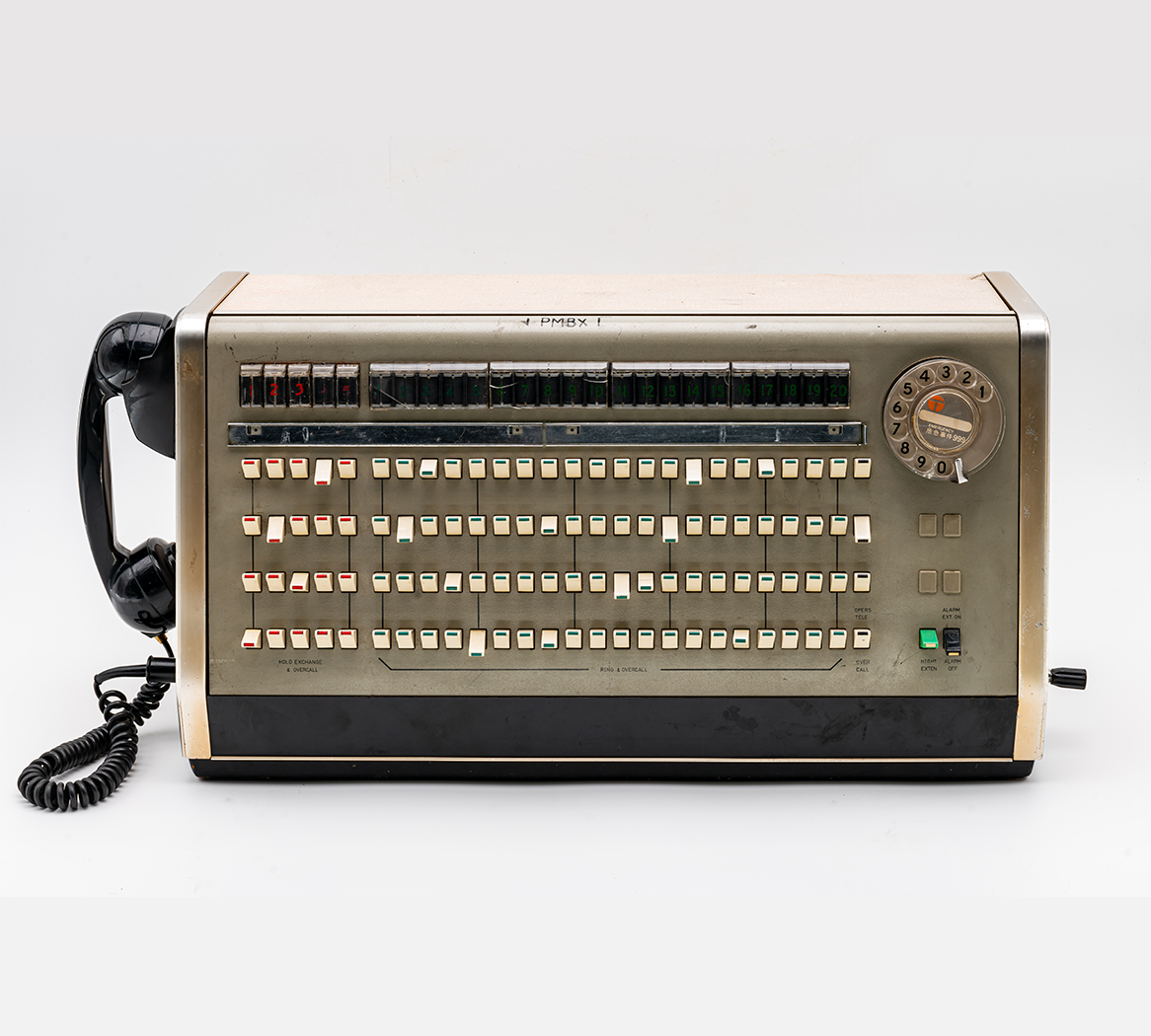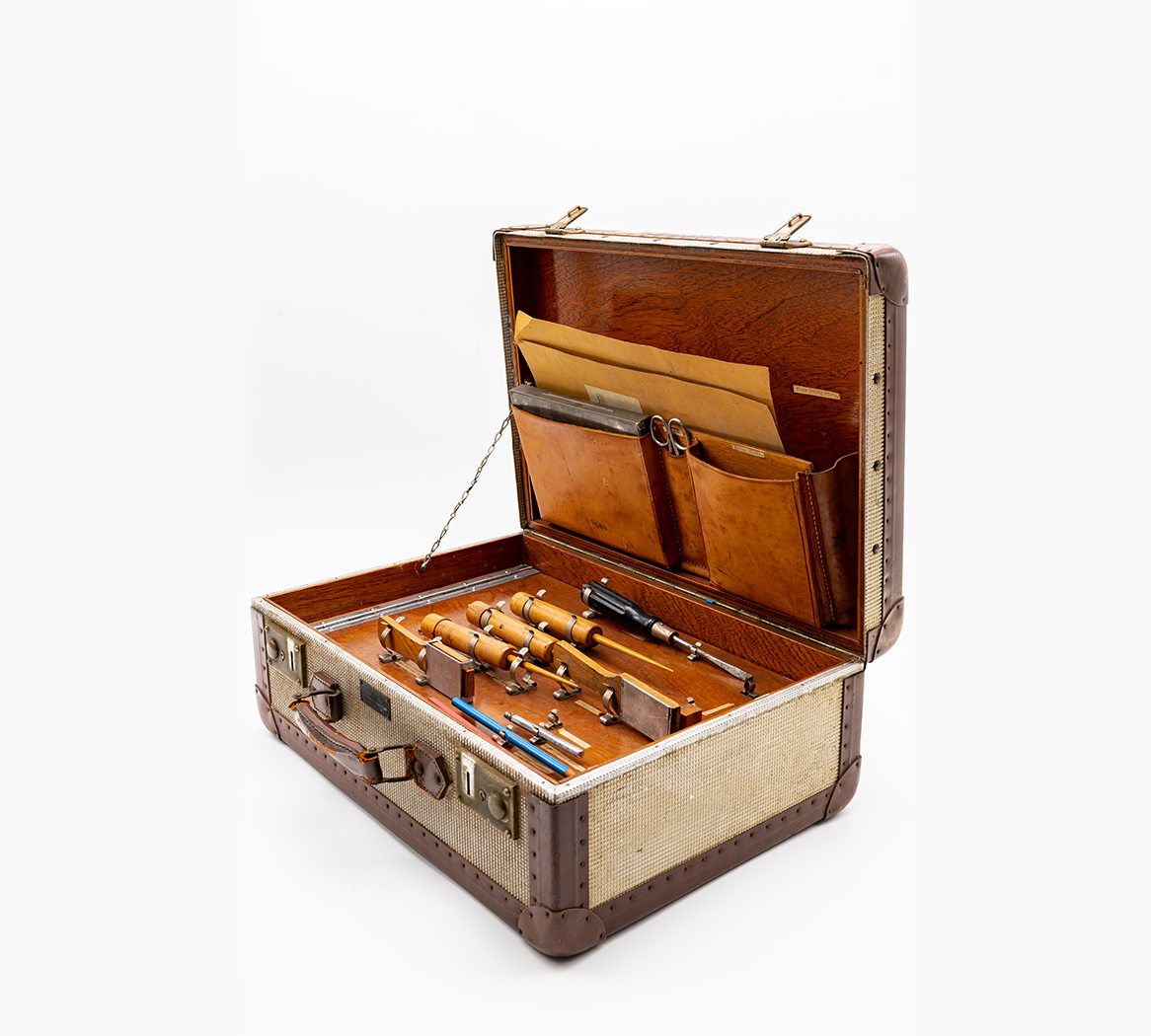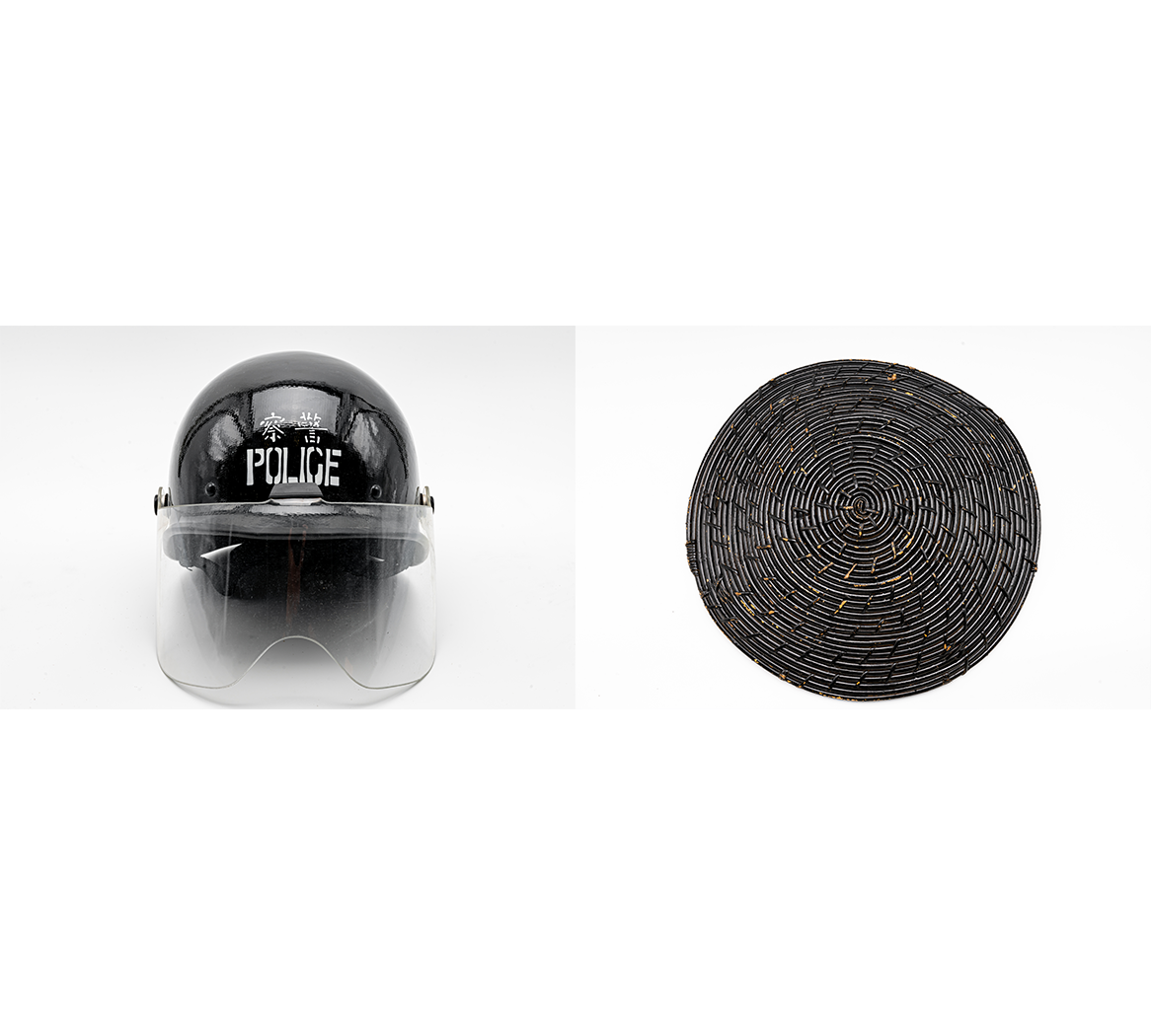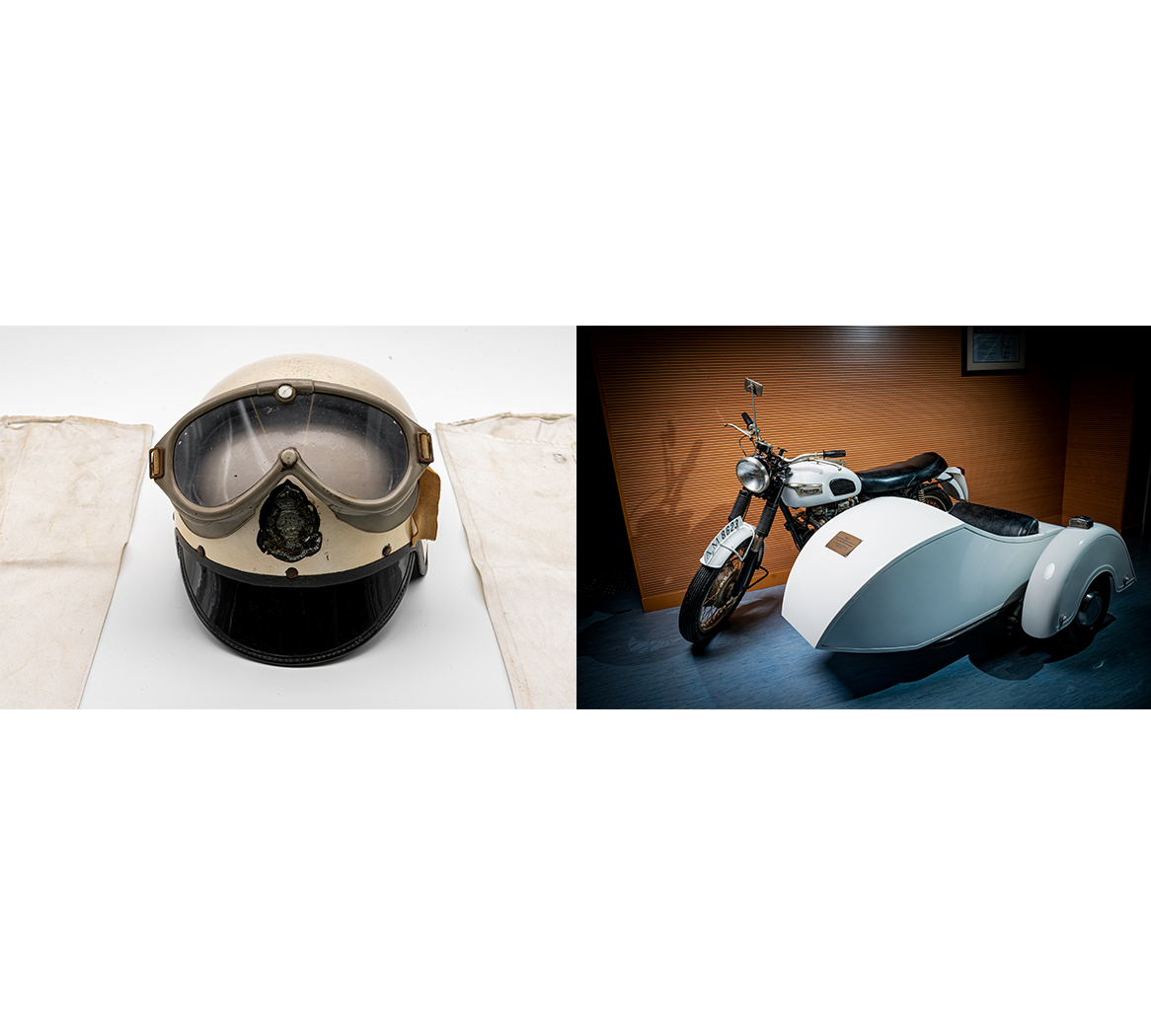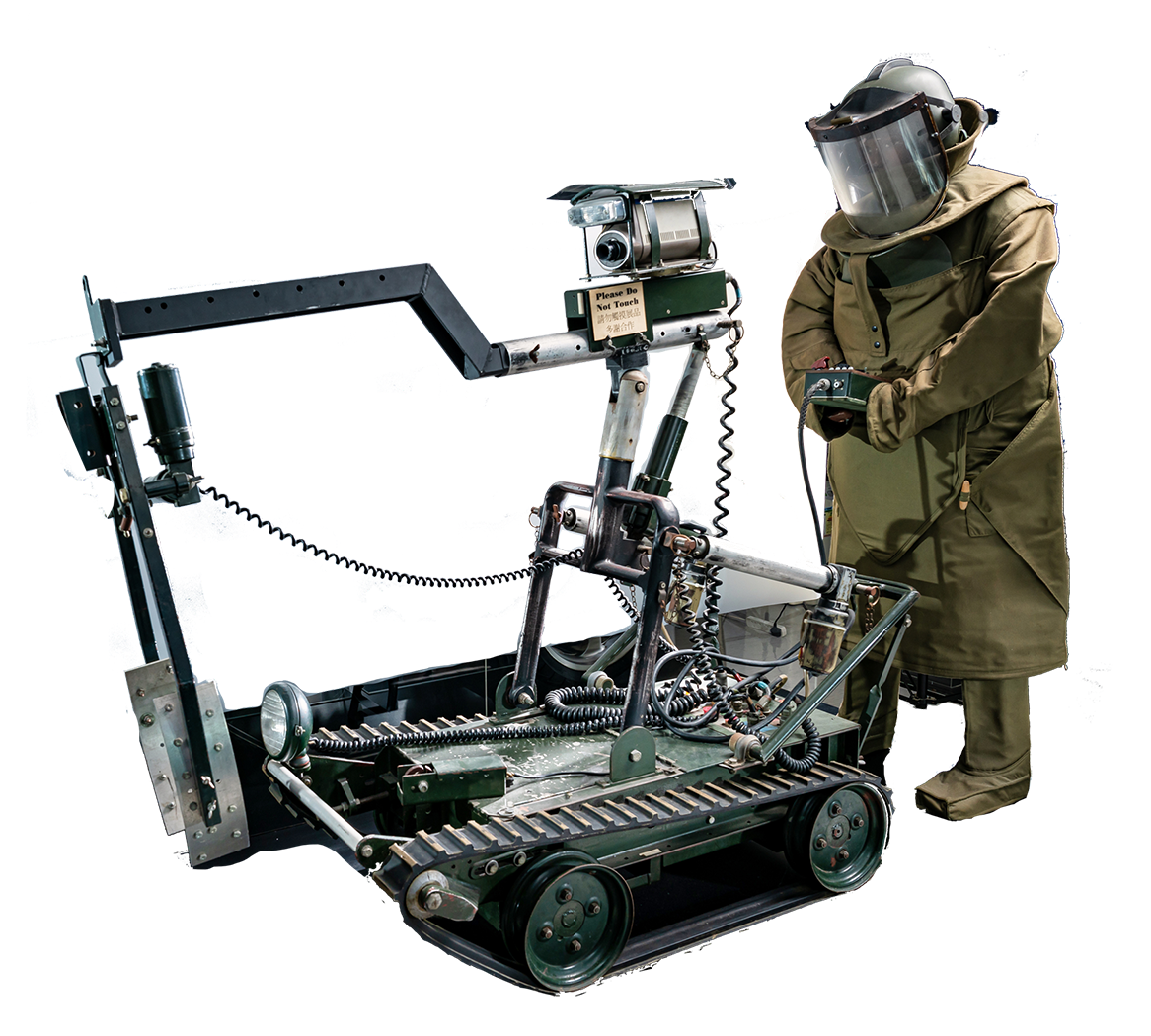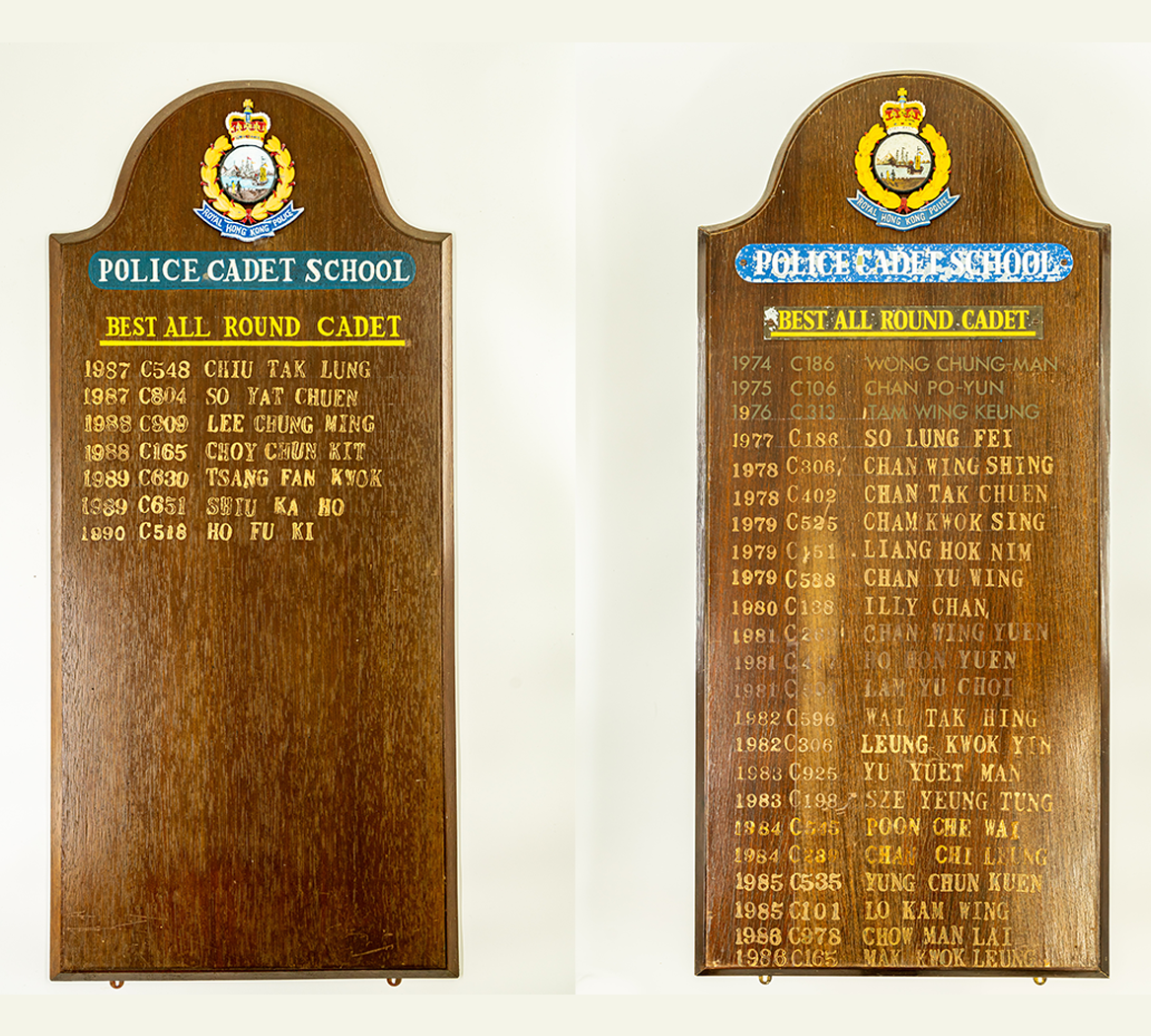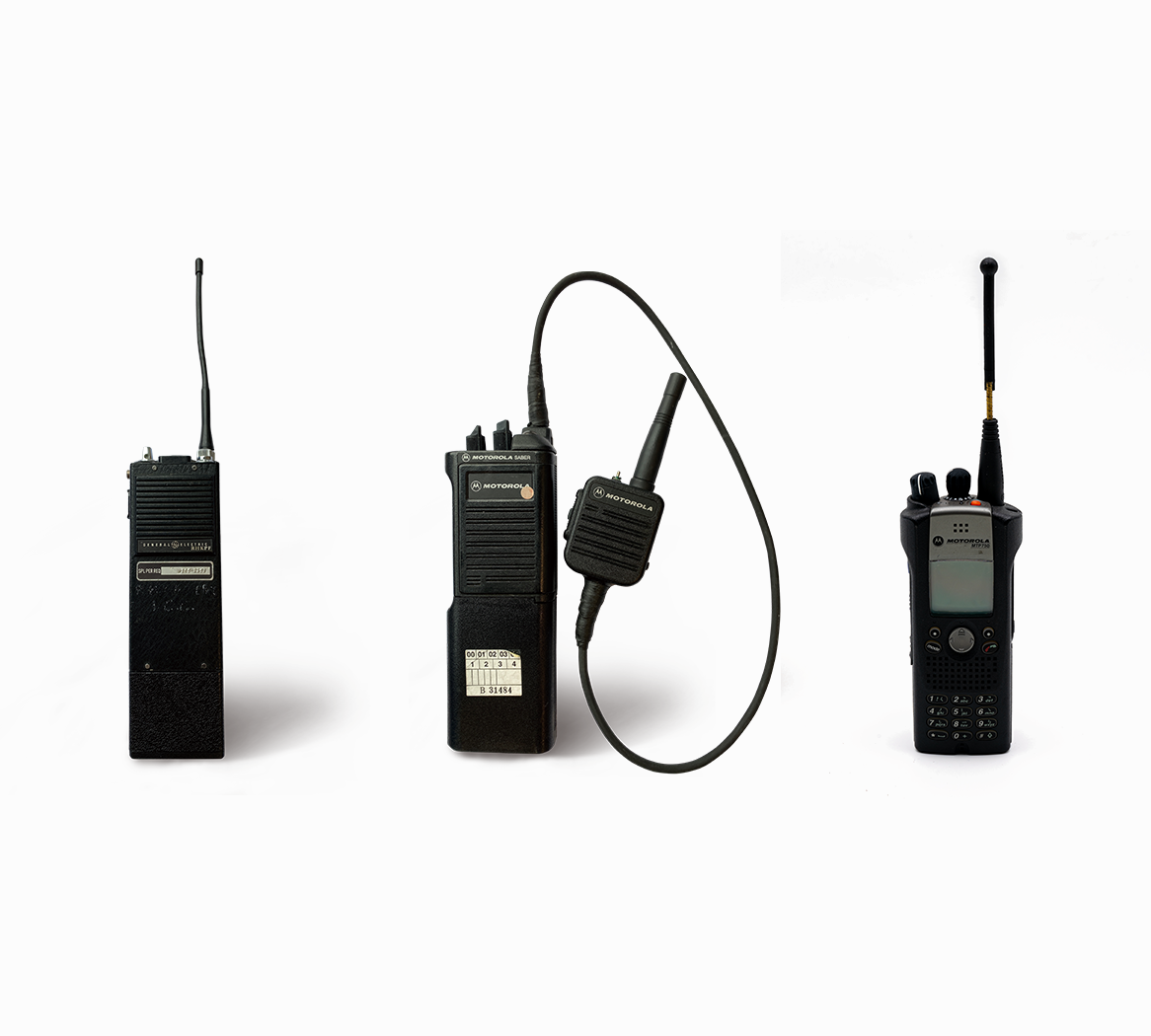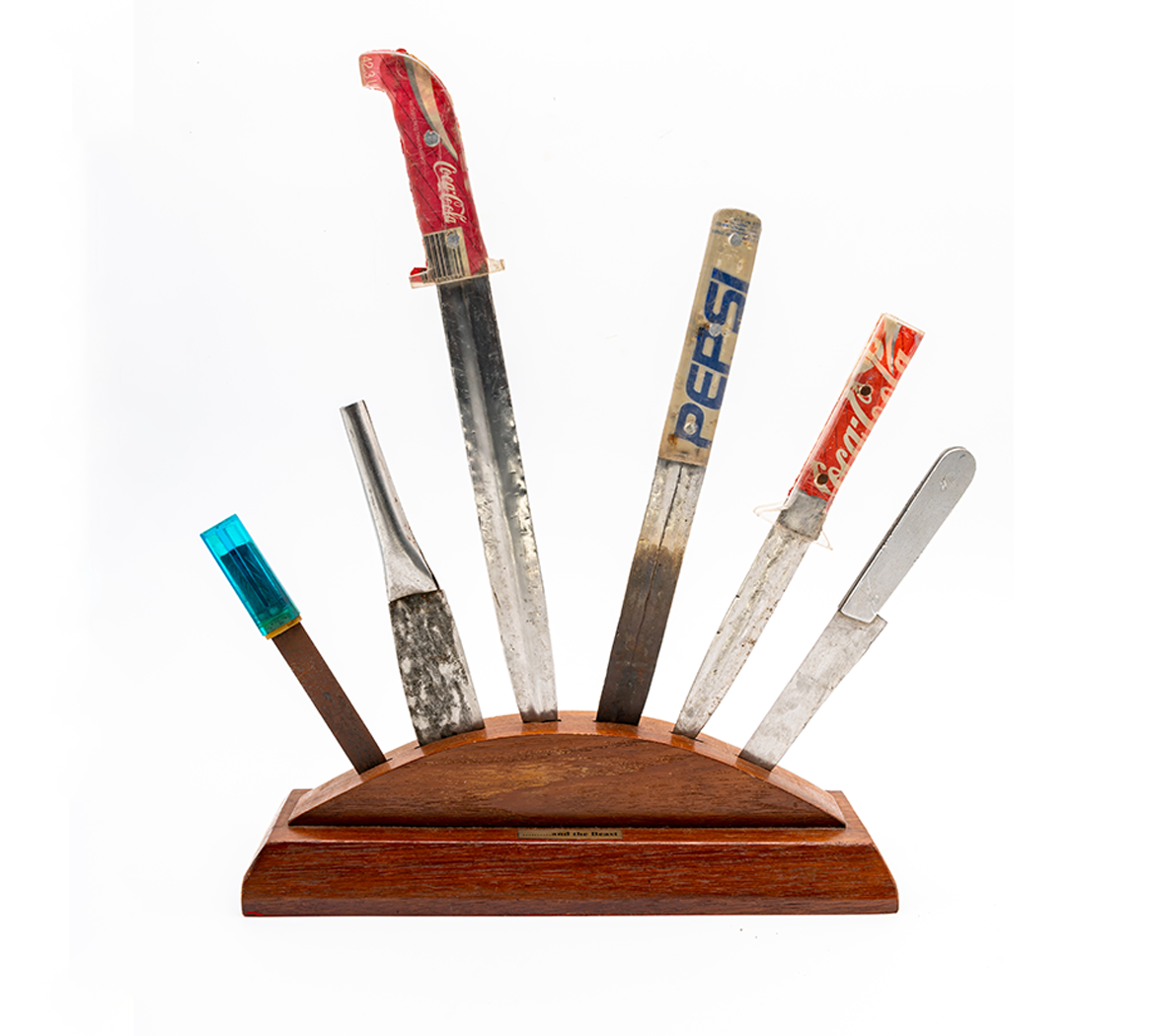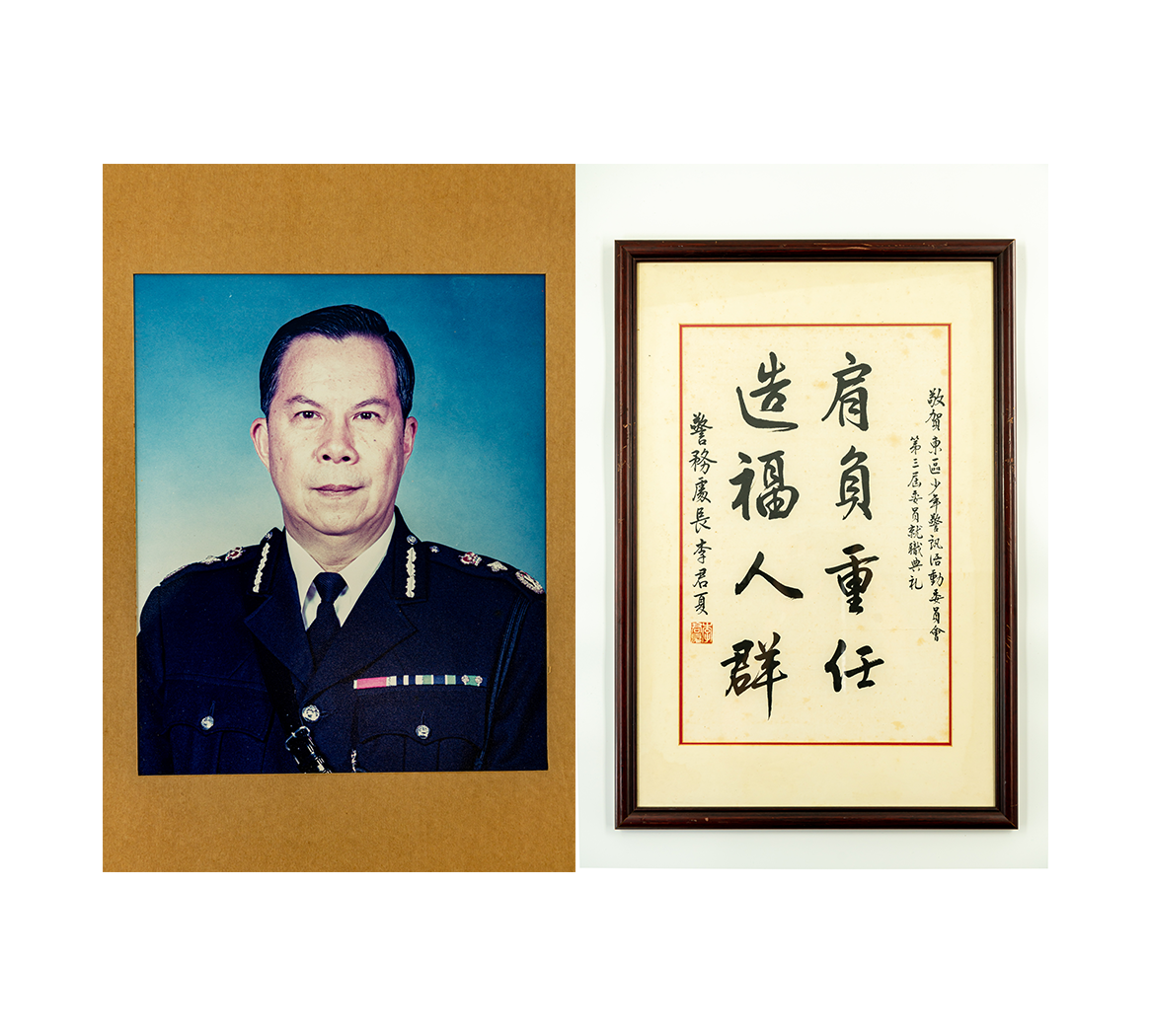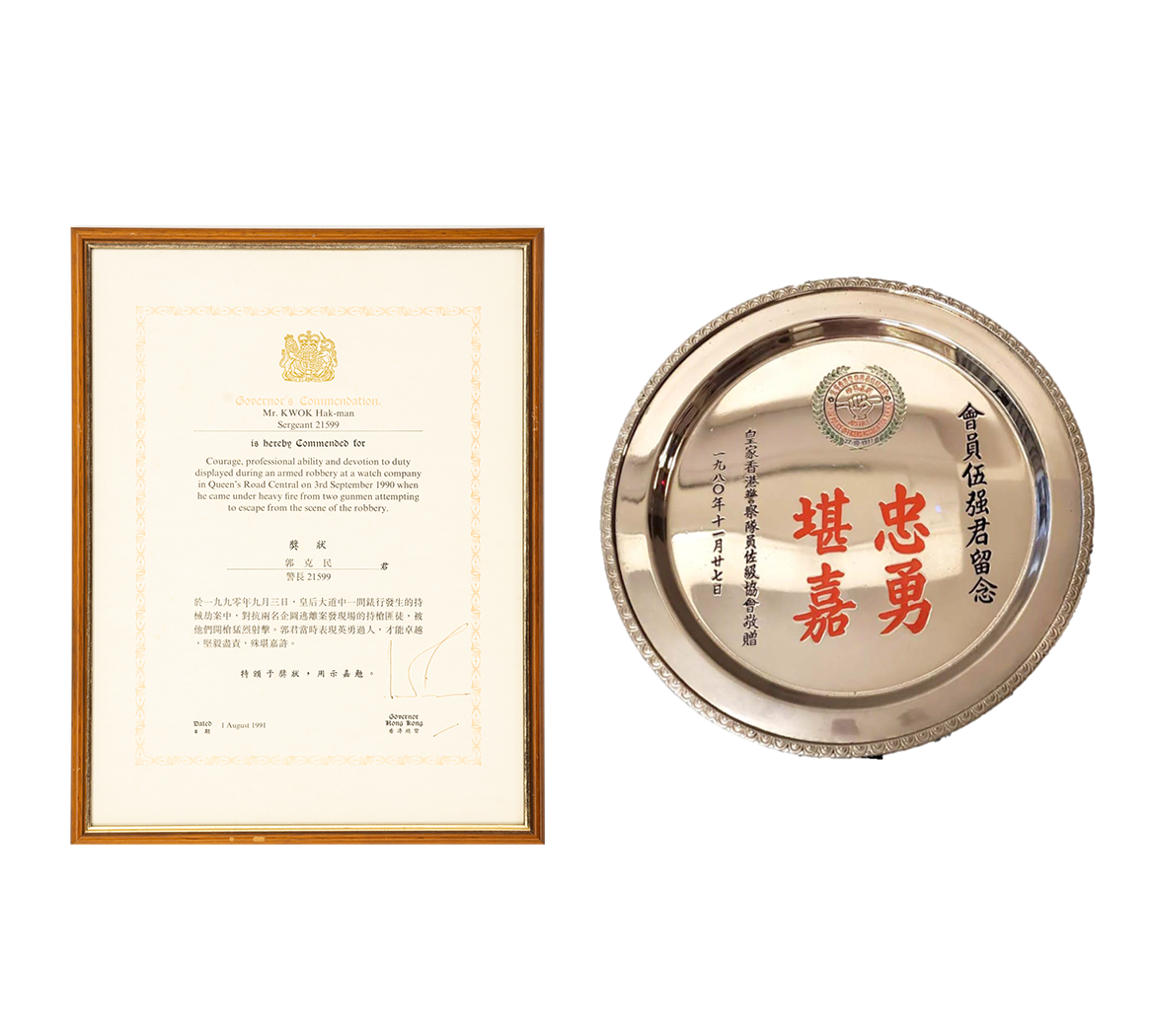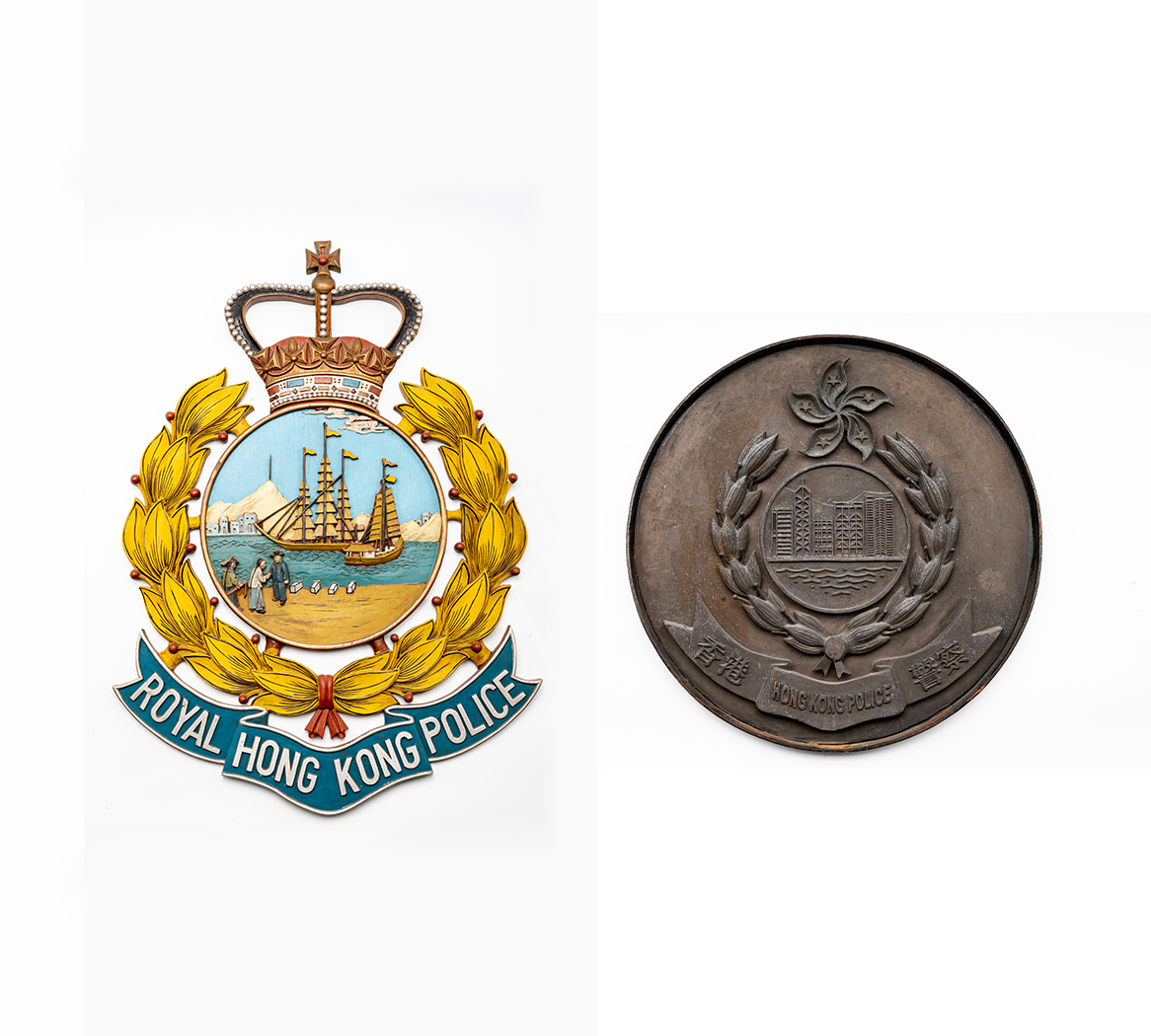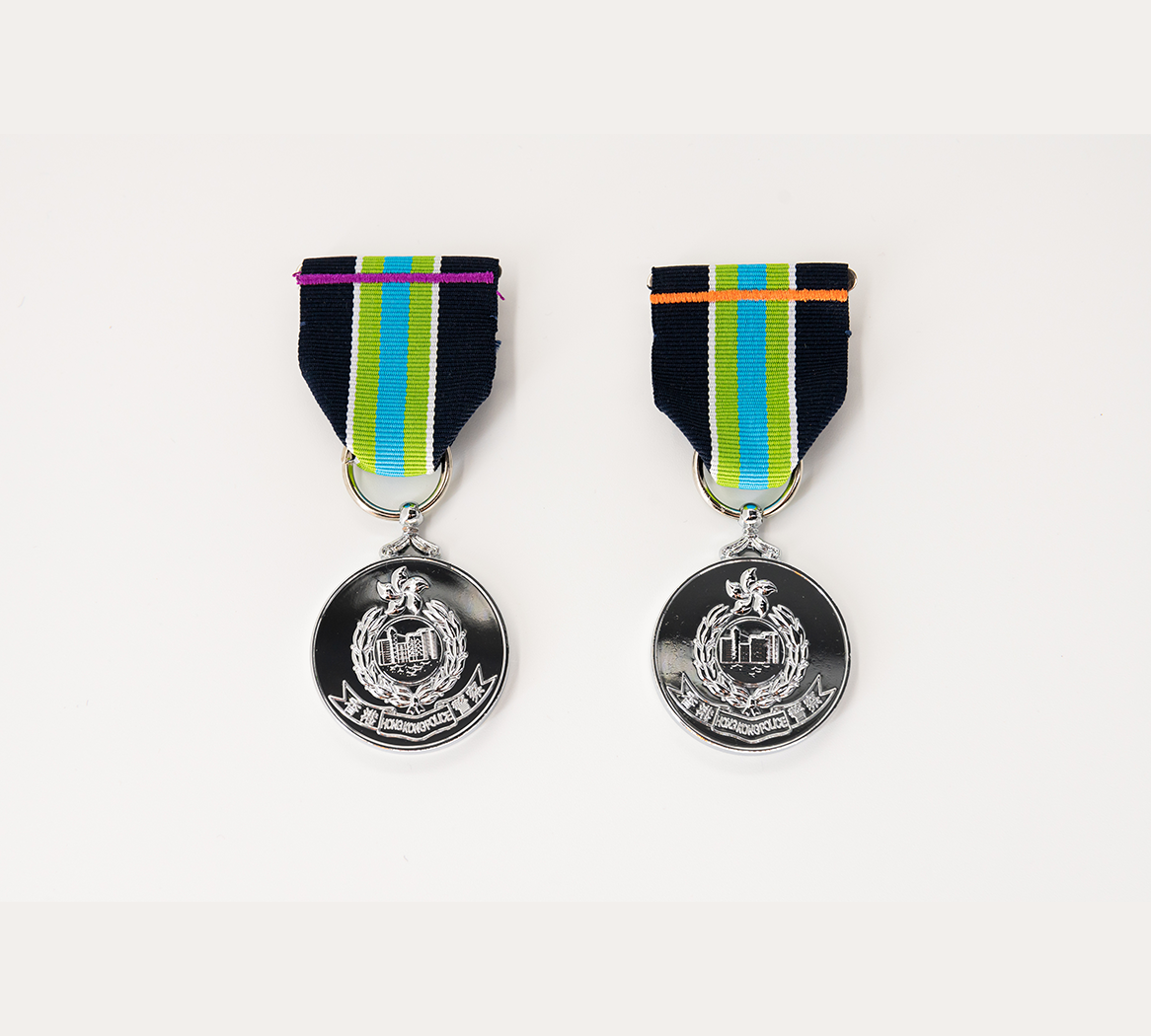Description
The Sixth World Trade Organization (WTO) Ministerial Conference was held in Hong Kong from 13 to 18 December 2005. A large number of anti-globalisation protesters, mainly Korean farmers, came to Hong Kong to stage processions and demonstrations. As many international business meetings, including the WTO Ministerial Conference, had attracted numerous and even violent demonstrations in the past, under the leadership of the then Commissioner of Police Lee Ming-kwai, the whole of the Hong Kong Police Force was mobilised to ensure that there would be sufficient officers to cope with the demonstrations and to perform daily policing work, allowing the WTO Ministerial Conference to run smoothly.
Personal protective gear is essential when police officers are faced with highly charged protesters. During the demonstrations against the WTO Ministerial Conference, the police officers were all equipped with a long straight baton. This baton, designed mainly for anti-riot purposes, is longer than the extendable one and stops assaults more effectively. Introduced in 2005, the riot helmet has a protective neck pad which is flame resistant and offers better protection. However, the number of Korean protesters was huge, and they were highly organised. Many of them had been militarily trained through the conscription system, so they were tough. As a result, the deployed police officers wore what is commonly known as “Robocop” armour (consisting of 15 parts and weighing 9 pounds) in order to reduce the risk of injury. They carried a polycarbonate pressure-moulded transparent round shield that did not block their vision, was fire and corrosion resistant, and had a raised edge to protect the officers from liquid attacks. The “Robocop” gear offered good protection but slightly limited officers’ flexibility.
The green riot uniforms worn by police officers in the past were commonly known as “Korean kit”. South Korean police officers were faced with frequent riots in the 1970s and 1980s. Being experienced in handling riots, they then developed corresponding tactical uniforms. On the contrary, the Hong Kong Police Force did not have a specific riot uniform. After many riots involving the Vietnamese boat people, the Force realised that the ordinary uniform was insufficiently fire-resistant. Consequently, in the 1990s the Force introduced a riot uniform modelled on the one worn by the South Korean police, which had better fire resistance properties than ordinary uniforms. However, in view of the riots in the second half of 2019, in which a large number of petrol bombs were thrown by rioters and police officers were attacked with sharp objects, the Force has acquired a new generation of riot uniforms, which are significantly more resistant to cuts, fire and corrosion.

